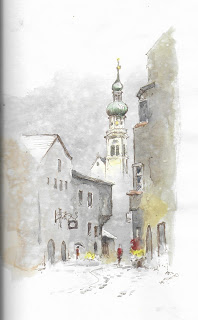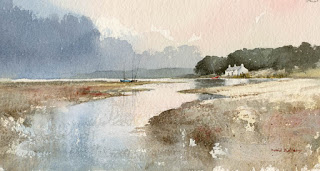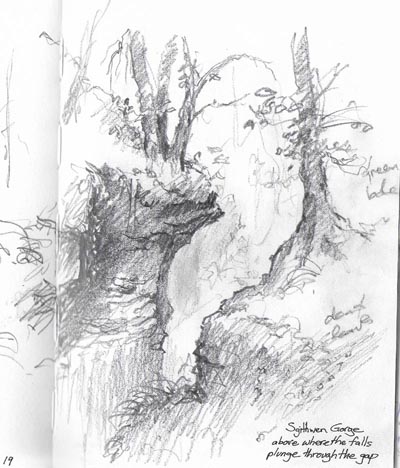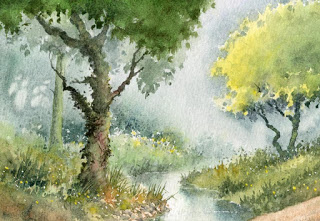I’ve just returned home from doing some staged paintings in the studios at Search Press. They are aimed at the next book which is about landscapes through the seasons. More on that before long. It’s been a truly busy autumn, so busy that I was only able to squeeze in one trip, a visit to the Cinque Terre in Northern Italy, where I managed quite a number of sketches despite appalling weather for much of the time.
There have been so many demonstrations and workshops that my own work has had to be put aside for a while, but at least I might do some of my own painting over Christmas – painting is like a disease, I just have to keep throwing the paint around!
Hopefully we’ll have some snow at some time, when we can get some new subjects. How it changes the landscape, so be ready to go forth with paints and camera – it might not last long.
The watercolour shows Pen-y-fan, the highest peak in the Brecon Beacons, which is currently on show at the Ardent Gallery in Brecon Tel 01874 623333 (the painting, that is, not the mountain!) I sketched it in colour during the middle of the day a few years ago, but felt it needed more colour, so I added a warm, evening sky and heightened the warmth of the vegetation and on the central tree. It’s always a good idea to add some colour to a cold scene if you can manage it.
Have a great Christmas and I wish you much success with your paintings in 2020





